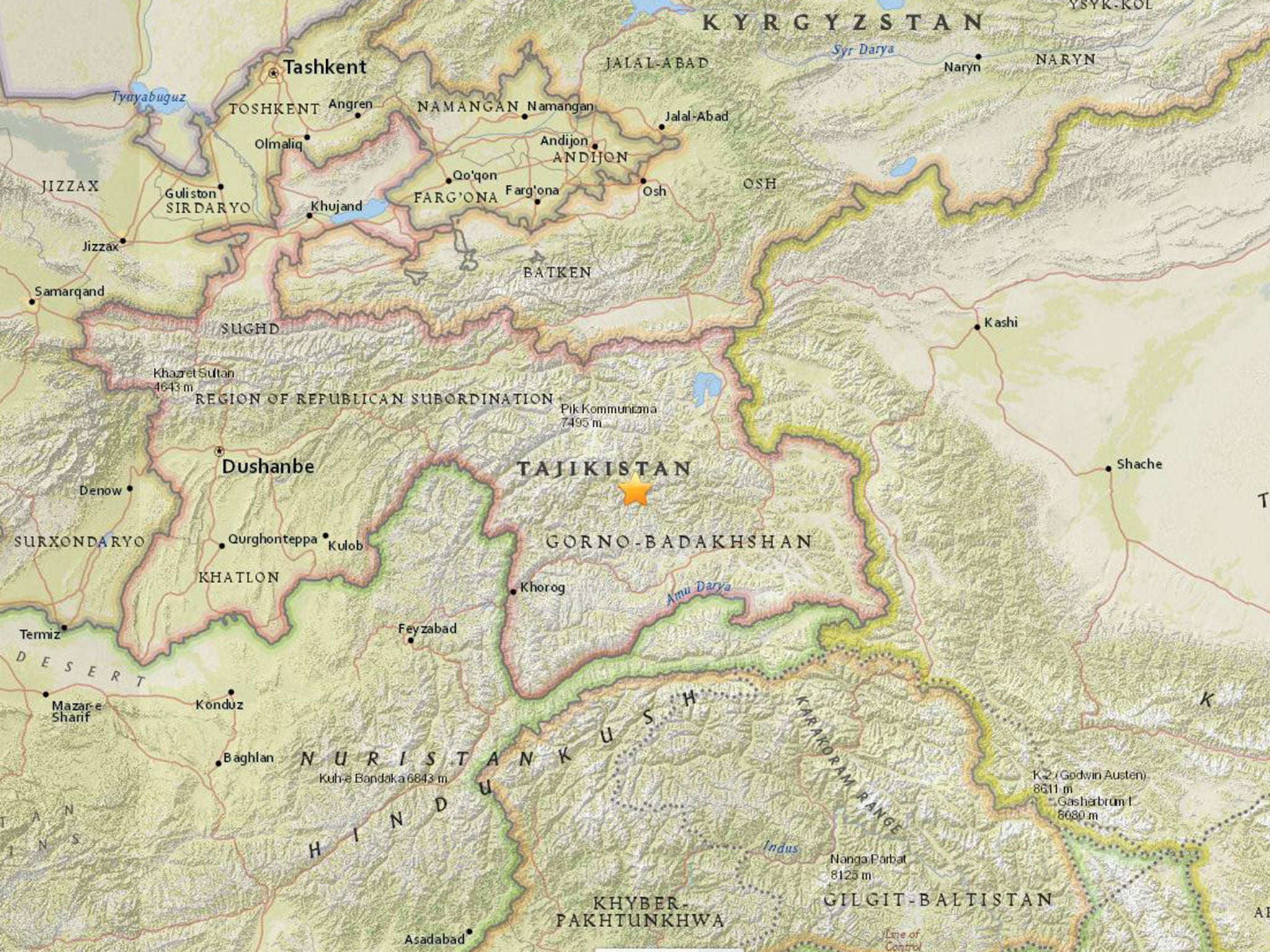Tajikistan earthquake: Magnitude 7.2 earthquake felt as far as India, Pakistan and Afghanistan
There were no immediate reports on casualties and destruction caused

Your support helps us to tell the story
From reproductive rights to climate change to Big Tech, The Independent is on the ground when the story is developing. Whether it's investigating the financials of Elon Musk's pro-Trump PAC or producing our latest documentary, 'The A Word', which shines a light on the American women fighting for reproductive rights, we know how important it is to parse out the facts from the messaging.
At such a critical moment in US history, we need reporters on the ground. Your donation allows us to keep sending journalists to speak to both sides of the story.
The Independent is trusted by Americans across the entire political spectrum. And unlike many other quality news outlets, we choose not to lock Americans out of our reporting and analysis with paywalls. We believe quality journalism should be available to everyone, paid for by those who can afford it.
Your support makes all the difference.A magnitude 7.2 earthquake has hit Tajikistan, according to the US Geological Survey.
It struck at 7.50am today with an epicentre in the Gorno-Badakhshan Autonomous Region, around 70 miles west of the city of Murghob, seismologists said.
Tremors were felt in Delhi, as well as in Punjab, Uttar Pradesh and across northern India. Hundreds of people ran out of shaking buildings and stayed out on the streets fearing aftershocks, NDTV reported.
A spokesman for Tajikistan's Emergencies Committee said it had no information so far on any casualties or damage from the quake, while Russia's defence ministry said its bases in the country were unaffected.
In Dushanbe, the Tajikistani capital around 400 miles from the earthquake's epicentre, the tremors felt "moderate" according to a resident speaking to Reuters by telephone.
The US Geological Survey describes the area as one of the “most seismically hazardous regions on Earth” because of tectonic activity along shifting fault lines.
The Main Pamir Thrust, beneath mountains in Tajikistan, produces numerous earthquakes as the Indian and Eurasian plates collide.
A 7.4 magnitude earthquake in the Central Pamir Mountains killed almost 100 people in 1911 and triggered a massive landslide that blocked the Murghab River.
Additional reporting by Reuters
Join our commenting forum
Join thought-provoking conversations, follow other Independent readers and see their replies
Comments